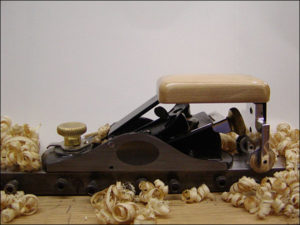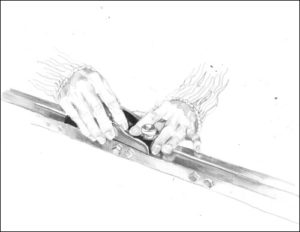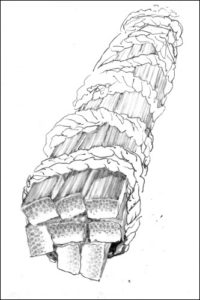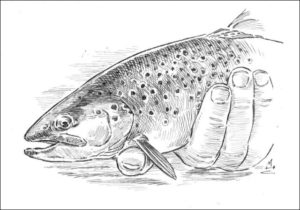- No products in the cart.
Learn Split Bamboo Rod Making with Ron Barch
 Join dozens of rod makers who have learned to make a split bamboo rod under the direction of angler/craftsman, Ron Barch. All classes are tailored to each individual and include instruction, tools, and materials.
Join dozens of rod makers who have learned to make a split bamboo rod under the direction of angler/craftsman, Ron Barch. All classes are tailored to each individual and include instruction, tools, and materials.
Flexible schedule: arrive with enthusiasm, leave with your own hand-crafted split bamboo rod.
To schedule rod making instruction, please email Ron Barch.
Testimonials about Ron and his rod building
“There are few people in the bamboo rod making world who have given back to the craft as much as Ron Barch has. Under Ron’s tutelage, both Kirk and I learned to make our first bamboo fly rods.”
Jason Veeneman, Karma Kane Rods
“I spent a week up in Grayling, Michigan with instructor Ron Barch and host Victor Edwards of Bamboo Bend, building a bamboo fly rod. It was a fantastic week of joyful learning, lots of planing, and a few cuts. We ended up with some great rods and fond memories.”
A Place for Rodmaking, by Ron Barch
This evening there is a chill in the air, a quiet, clear, blue softness and Sandhill cranes offer their guttural call to the setting sun. Tonight I will clean the shop and begin to plane a bamboo fly rod.

Illustration by Kim Mellema
If I have my way the workshop would be set apart from the rest of the world, hidden somewhere away from highways, and telephones. It would be more than a shack but not quite a building, just a place for those who understand the joy of making something for the simple pleasure of doing it. Rodmaking is one of those pleasures, and one’s surroundings, if chosen properly, can enhance the experience.
My ideal workshop would rest on a hill overlooking a trout stream, if the site were on a bend in the river, all the better. A mixture of pines and poplars would encircle the clearing with hardwoods growing higher up the river valley. By early December snow would already begin to bank agains the shop walls and winter nights would be as cold and crisp as the snap of a tippet saying goodbye to a hefty fish.

Illustration by Kim Mellema
It goes without saying that my dream shop would be constructed of slab siding or better yet cedar logs. The walls would enclose one large room, with rafters open to the ridgepole, and I’d store cane up there, along with rod cases and maybe an old pair of skis. Over on the South wall, overlooking the workbench, there would be a good sized window where the rodmaker could look up now and then to watch the snowshoe gate of a winter grouse or the stretching of a deer for higher bows. A single power line strung down a lane from the main house would provide electricity and in the corner hooked to a solid split stone chimney would be the woodstove, providing warmth and cheer and a place for the coffee pot.
For those times when I’m watching the percolator bubble or a friend stops by I’d have a couple of seats, one for me and one for my guest. For my leisure I’d provide an ancient oak stool whose rungs are worn by years of work shoes pressed against them. For the occasional visitor a cast off kitchen chair, usually piled high with junk, would suffice. In this place comfort would come from companionship and conversation, not the furnishings.

Illustration by Kim Mellema
Upon entering, one’s first awareness is the aroma of cane shavings and oil from a whetstone blending with the smell of woodsmoke and a damp wool coat. The light is a little dim, except over by the bench, but its an easy place to get used to, a nice place to be. In this rodmaker’s haven, one will find the time to dream and plan and craft things for next season, next year, and yes, even for the next generation.



